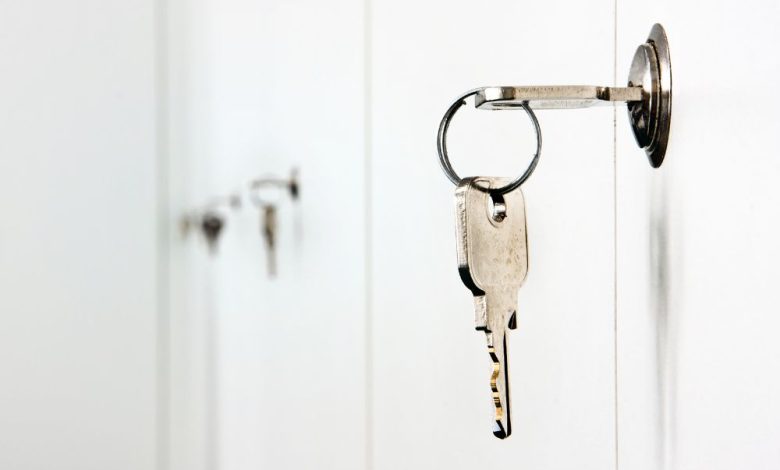Why Are Companies Secretly Swapping Out Their Office Locks?
Why Are Companies Secretly Swapping Out Their Office Locks?

In today’s fast-paced digital world, the concept of security has taken on a whole new meaning. With cyber-attacks and data breaches becoming more prevalent, companies are beginning to realize that physical security is just as important as digital security. That’s why many companies are secretly swapping out their office locks in an effort to enhance their overall security measures.
One reason for this shift is the desire to control access within the office space. Traditional key-based systems can be easily compromised if an employee loses their key or fails to return it after termination. By upgrading to electronic access control systems, companies can quickly deactivate lost or stolen credentials and grant specific permissions to different employees, ensuring that only authorized personnel have access office lock replacement.
Another driving factor behind this trend is the increasing adoption of remote work and flexible schedules. With employees coming in at different times or working from home part of the week, it becomes challenging to monitor who enters and exits the office premises. By implementing smart lock systems that record entry and exit data, companies can gain better visibility into employee activity and maintain a more secure environment.
Overall, these secretive lock swaps are part of a larger effort by businesses to stay one step ahead in terms of physical security. In a world where threats constantly evolve, investing in smarter locking mechanisms is undoubtedly a wise move for any company looking to protect its assets and ensure peace of mind for both management and employees alike.
Section 1: Increased Security Concerns
With the advancement of technology and the increasing number of cybersecurity threats, companies are becoming more cautious about their security measures. One area that has come under scrutiny is office locks. Many organizations are now secretly swapping out their traditional locks for advanced digital locks to enhance security.
The use of digital locks brings several benefits. First and foremost, they provide better control over access to sensitive areas within the office premises. With traditional locks, it is easier for unauthorized individuals to duplicate keys or gain access through picking or tampering with the lock. However, digital locks offer advanced features like biometric recognition and remote monitoring, making it much more difficult for intruders to breach entry.
Moreover, digital locks provide a higher level of flexibility and convenience compared to traditional locks. Employees no longer need to carry bulky keychains or worry about losing keys since access can be granted via smartphone apps or keycards. Additionally, these systems allow employers to easily track who enters and exits the premises at any given time – a valuable asset when investigating security breaches.
Section 2: Protecting Valuable Assets
Companies are constantly looking for ways to protect their valuable assets, and one recent trend has caught the attention of experts: secretly swapping out office locks. This covert strategy may seem extreme, but with increasing incidents of theft and corporate espionage, companies are taking drastic measures to safeguard their intellectual property.
One reason behind this secretive tactic is the fear of internal theft. Companies often deal with sensitive information and trade secrets that could be worth millions or even billions of dollars. By changing locks without notifying employees, organizations can ensure that only authorized individuals have access to these valuable assets.
In addition to internal threats, companies also face external risks. Unauthorized individuals may gain access to corporate offices through various means such as impersonation or stolen credentials. Subsequently, changing office locks regularly allows businesses to stay one step ahead in preventing unauthorized entry from potential saboteurs or competitors.
Overall, the decision for companies to discreetly swap out their office locks stems from a desire for enhanced security against both internal and external threats.
Section 3: Preventing Unauthorized Access
Preventing unauthorized access has always been a priority for companies. From secure computer systems to restricted areas, businesses take various precautions to safeguard their assets. However, recently there has been a surge in another security measure – swapping out office locks. Companies are quietly replacing their old locks with newer, more advanced models, and it begs the question: Why the secrecy?
One possible explanation is the growing concern over physical security breaches. While many businesses have already implemented sophisticated digital safeguards, they have realized that unauthorized access can occur through traditional means as well. By discreetly upgrading office locks, companies aim to stay one step ahead of potential threats.
Another reason for this trend could be related to changing work environments. With an increasing number of employees embracing remote work or flexible schedules, organizations need a way to manage who can enter their premises at any given time. Swapping out office locks allows them to easily control access rights and keep track of who is entering and leaving the building.
Overall, although secretive in nature, swapping out office locks appears to be a logical step for businesses aiming to enhance both digital and physical security measures while adapting to evolving work dynamics. By proactively investing in these upgrades without drawing attention to themselves, companies can better protect their assets and ensure a safe working environment for all stakeholders involved.
Section 4: Safeguarding Sensitive Information
One of the key reasons why companies are secretly swapping out their office locks is to safeguard sensitive information. In today’s digital age, data breaches and cyber threats are becoming increasingly common. It is crucial for companies to not only protect their online systems but also physically secure their premises. By upgrading their locks, businesses can prevent unauthorized access and ensure that confidential information remains safe.
Another factor driving this trend is the need for enhanced security measures in a rapidly changing world. Traditional lock systems can be susceptible to picking or breaking, making it easier for intruders to gain entry into the premises. By installing more advanced and secure locks, companies can reduce the risk of break-ins and thefts. Moreover, modern lock technologies offer additional features like remote access control and audit trails that allow businesses to monitor who enters and exits their offices, providing an added layer of protection.
In addition to security concerns, some companies may opt for new locks as part of a broader strategy to upgrade their office infrastructure. Upgrading locks can be considered an investment in enhancing overall workplace safety and efficiency. By implementing high-quality locks that are easy to use and maintain, organizations can improve employee satisfaction while also ensuring that sensitive areas within the office are protected from unauthorized entry.
Section 5: Enhancing Employee Safety and Well-being
Enhancing employee safety and well-being has become a top priority for companies across the globe. In their quest to create a secure work environment, many companies are now secretly swapping out their office locks. These covert changes signify a new era of workplace safety measures, where traditional locks are being replaced with state-of-the-art electronic systems.
One of the key reasons behind this shift is the ability to provide better control over who has access to specific areas within an office building. Electronic locks offer features such as keycard or biometric access, allowing companies to monitor and restrict entry based on individual permissions. This not only enhances security but also ensures that employees feel safe in their designated workspaces.
Moreover, these advanced lock systems can be linked with other security technologies such as surveillance cameras and alarm systems, creating a more comprehensive approach towards office security. The integration of these technologies enables companies to respond quickly in case of any breaches or emergencies.
Overall, by opting for secretive lock swaps, companies demonstrate their commitment to enhancing employee safety and well-being through innovative solutions. These advanced lock systems not only provide heightened security but also instill confidence among employees that they are working in an environment where their welfare is valued. As technology continues to advance, it will be fascinating to see how these invisible changes shape the future workplace landscape and contribute further to employee satisfaction and peace of mind.


